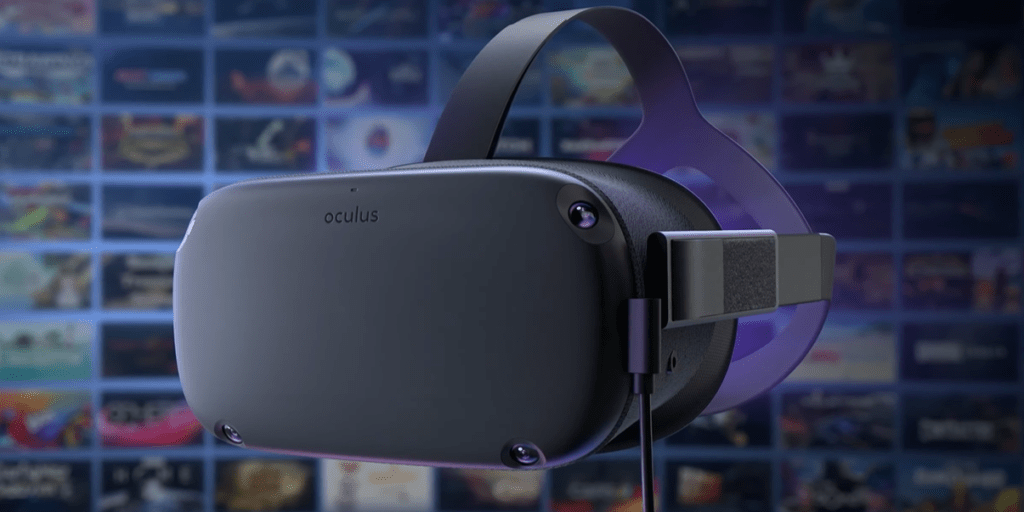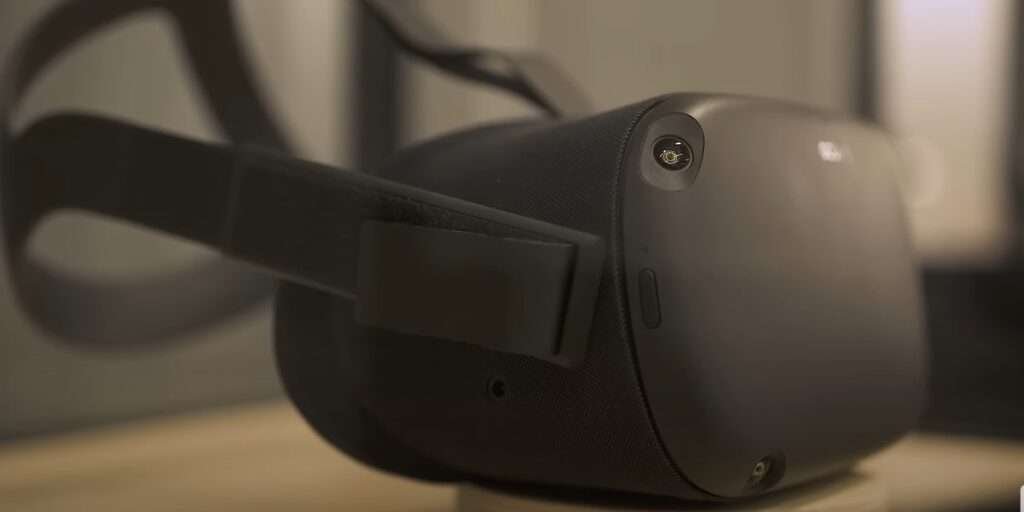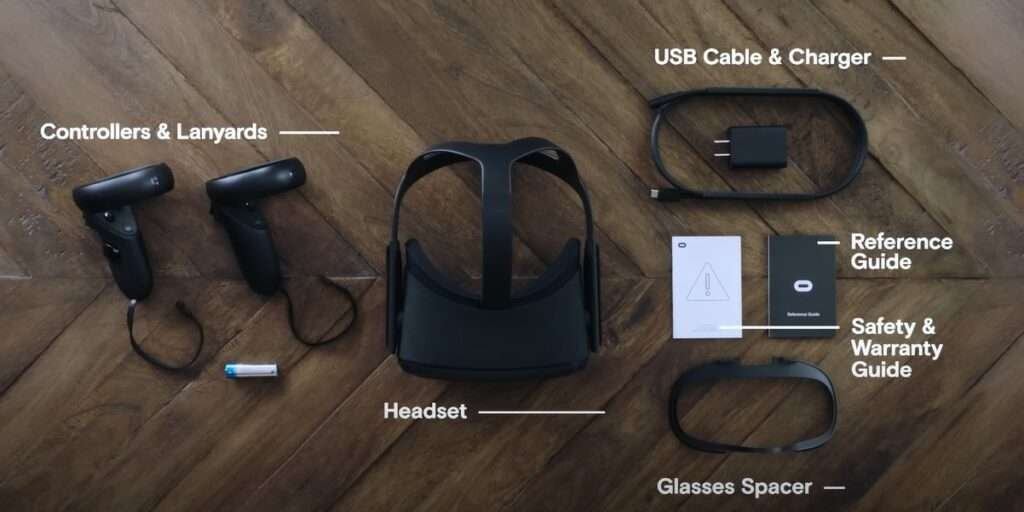
I would like to try out the Oculus Quest 1 VR headset. It’s a standalone device released in May 2019. It comes with inside-out tracking and controllers. Powered by a Snapdragon 835 SoC CPU, it runs on Android 7. You can upgrade it to Android 10. The headset has two Penta Matrix OLED displays. They offer a resolution of 1440 x 1600 at 72 Hz. Plus, there are built-in speakers and two headphone jacks for audio. After hearing all the specifications, are you excited about the Oculus Quest 1? I was also happy to listen to all of these, so I tested this device out of curiosity. After trying it for a while, I am here to share my personal experience about the Oculus Quest 1. So let’s explore more about it.
Design And Comfort Of Oculus Quest 1:

The first thing I like about this is it’s simple look. It has rounded corners and four sensors on the front for accurate tracking. The headset is covered in solid fabric and has straps you can adjust to fit your head. There’s a slider and buttons for you to change settings and speakers built in. You can also plug in headphones on either side. Overall, it’s comfortable and easy to use. In terms of comfort, you’ll find that the headset offers adjustable sizing and an IPD slider. After wearing this, I found it very comfortable, and it allows you to tailor it to your preferences. However, some users might initially find the fabric around the eyepieces a bit scratchy, though it could become softer with continued use. Fortunately, there’s a glasses spacer included for those who wear glasses. Nevertheless, you may still experience some discomfort over prolonged use due to the weight distribution of the headset.
Oculus Quest 1 Display And Performance:

The dual OLED screens allow you to enjoy high-resolution and sharp images on the Quest. It was a groundbreaking experience for me. The display is so good that I fell in love with it. You can adjust each screen’s position for maximum comfort and sharpness, which is a great feature. However, you may find it challenging to achieve optimal comfort and block out light due to the headset’s design and weight distribution. After using it, I have no doubt about its performance. You’ll find that the Quest runs on a Snapdragon 835 processor and operates with an Android-based OS. You’ll experience a resolution of 1600×1440 per eye and a refresh rate of 72Hz. This resolution surpasses that of the original Rift and Vive, although the refresh rate is slightly lower. As a result, you’ll experience a reduced screen door effect, contributing to a more precise visual experience overall.
Oculus Quest 1 Controllers:

The Quest is equipped with touch controllers that closely mirror those of the Rift. These controllers boast triggers, clickable joysticks, and thumb buttons, offering you a seamless and intuitive gaming experience. These Oculus Quest 1controllers buttons feel good, and I found them pretty premium. Moreover, the tracking ring on these controllers can detect finger movements, further enhancing the immersion factor during gameplay. However, some users may perceive the tracking ring as somewhat awkward.
Specification of Oculus Quest 1:
Now, suppose you are a more technical person. In that case, I have created a table for you about the specifications of Oculus Quest 1. You can quickly get a clear view of its capabilities and offerings from here.
| Specs | Oculus Quest |
| Field of View | 100° |
| Max Resolution | 1600 x 1440 per eye |
| Screen Type | OLED |
| Pixel Density | 538 |
| Sensors | 🛰️ Accelerometer, 🔄 Gyroscope |
| Processor | Snapdragon 835 |
| Max Refresh Rate | 72 Hz |
| Tracking | 6⃣ DOF Inside Out Tracking with 4 Cameras |
| RAM | 4GB |
| Storage | 64 or 128 GB |
| Weight | 570g |
| Requirements | 🚫 None |
My Personal Opinion About The Oculus Quest 1

In this modern world, the latest and most promising technology is VR technology. The Oculus Quest 1 is a great device, and after using it for testing purposes, I plan to buy one because I like how it feels and works. Though it still has some problems, the newest Oculus 2 has overcome many. I have an article about the issues and solutions of the Oculus Quest series. So, if you are interested, you can check out my article, “Everything you need to know about Oculus Quest: the problems and solutions.”
Pros and Cons Of Oculus Quest 1:
| Pros | Cons |
| The Quest’s small size and optional carrying case make it easy to take anywhere. | The Android OS can suffer from sluggishness and occasional freezing, detracting from the overall user experience. |
| Enjoy hours of gameplay with impressive battery performance for both the headset and controllers. | Updates may introduce lag and decrease system performance, impacting usability. |
| The Oculus Touch controllers offer precise tracking and a comfortable button layout for an immersive gaming experience. | Connecting to a PC via Oculus Link can be problematic, requiring specific USB 3.0 cables for optimal performance. |
| Dive into a vast library of games, including exclusive titles, ensuring endless entertainment options. | The Snapdragon 835 CPU may struggle with demanding games, resulting in lag and performance issues. |
Conclusion
I hope you have enjoyed my personal experience with the Oculus Quest 1. I have also shared my experience problem s of using Oculus Quest 2 and Oculus Quest 3. Also, I have written articles about the latest Apple Vision Pro after testing it. If you like my article, I will welcome you to read my other articles about VR technologies.
